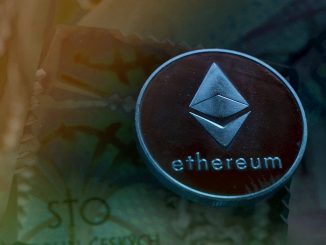
Ethereum (ETH) is the world’s second most capitalized digital asset, and it deserves its market position. In fact, it was the first decentralized finance (DeFi) blockchain-based software platform to support smart contracts, and its large user base and active development community make it an attractive investment and strong contender for future growth.
When assessing whether a DeFi project’s native token is valued appropriately, investors are now looking at a key metric called “total value locked” or TVL. TVL includes the value of the tokens locked in DeFi projects, as well as the value of the tokens locked in protocols that support DeFi projects.
As many investors know, for years, Ethereum’s primacy in DeFI has gone unchallenged. Accordingly, the network’s TVL has reflected this dominance with its TVL hitting an all-time high of $162.75 billion in mid November.
However, with the rise of new protocols and platforms, that is no longer the case. Today, there are a number of different Ethereum competitors vying for attention from developers and users. As a result, the TVL of Ethereum no longer dominates the market. In fact, the network’s TVL dominance in DeFi currently stands at 56% with $126 billion. A significant drop from around 97% in January and 69% in October 2021.
Alternative DeFi Networks
Solana
Created in 2017, Solana (SOL) has emerged as one of the most popular smart contract platforms, with a handful of its new projects gaining traction. Solana Pay is one of the latest projects to catch people’s attention. This P2P crypto payments platform that’s built for immediate transfers and fees that are fractions of a penny, is totally disruptive in nature as it allows merchants to deal entirely in crypto, making it easier and faster for them to conduct transactions.
With Ethereum’s fees being relatively high, users have been searching for other blockchains that can handle smaller transactions. Solana has emerged as a key beneficiary of this trend, with many people using its network to buy and sell non-fungible tokens (NFTs) which are touted as an integral part of the Metaverse, another concept that’s also gaining popularity.
NFTs are all the rage these days, and it’s no surprise that developers are flocking to the Solana blockchain to build out their own NFT marketplaces. Artrade is yet another great example of this trend.
This social NFT app allows users to buy, sell, and trade NFTs with each other. The app also features a built-in wallet, so you can store your NFTs in one place. Plus, with Solana’s high transaction speeds and low fees, Artrade is able to offer users a fast and efficient way to trade. According to CryptoSlam, Solana is the second largest network in terms of trade volume after Ethereum.
The Solana community is excited about the potential of the platform and are hopeful that it will become a base layer for DeFi applications. So far, Solana has shown promise and is well on its way to becoming a leading player in the space.
Cardano
While many investors are focused on the growth of Solana, Cardano (ADA) is quietly positioning itself as a worthy competitor. The network is now traded on over 100 exchanges and hosting 130 dapps on its platform.
Recent network update comments made by Cardano’s founder Charles Hoskinson suggest that one of the industry’s most popular crypto projects is set to undergo some major changes, starting with the most important one: its scalability model which is expected to be improved, making the Proof-of-stake blockchain (PoS) highly competitive with competing lightning-fast networks. In his update Hoskinson also compared Cardano with the Ethereum network, noting that ADA has set the standard for PoS blockchain.
Meanwhile, Cardano received a boost this week from institutional investors. Grayscale, a leading provider of digital currency investment products, announced the launch of the Grayscale Smart Contract Platform Ex-Ethereum Fund (GSCPxE) with Cardano being the largest position. This is significant because it shows that big money is starting to flow into ADA. And with a weighting of 24.63%, it’s clear that investors see the $40 billion market cap cryptocurrency as a key player in the space.
This could lead to a surge in Cardano’s popularity and help solidify its place as a leading digital asset.
🧵As of inception on 3/16, #GSCPxE’s holdings were: #Cardano $ADA, 24.63%#Solana $SOL, 24.27%#Avalanche $AVAX, 16.96%#Polkadot $DOT, 16.16%#Polygon $MATIC, 9.65%#Algorand $ALGO, 4.27%#Stellar $XLM, 4.06%
Holdings are subject to change. Learn more: https://t.co/hYqzyDGpvv pic.twitter.com/MbASMXZ8hy
— Grayscale (@Grayscale) March 22, 2022
Avalanche
Last, but definitely not least. There’s a race to the finish line when it comes to blockchain processing times, and it looks like Solana and Avalanche (AVAX) are in the lead. Solana has long been lauded for its fast processing times, and now Avalanche is giving them a run for their money.
According to the team, they are the “fastest smart contracts platform in the blockchain industry, as measured by time-to-finality,” which is the point where a transfer can not be altered.
Avalanche achieves finality by having three interconnected blockchains instead of the usual one. This makes its network not only fast without sacrificing security or scalability but also more resistant to attack, as any attempt to rewrite history on one blockchain would be immediately detected and rejected by the other two blockchains.
This also makes Avalanche, now a top-10 cryptocurrency by market cap, more resistant to fork, as any attempted fork would have to be supported by all three blockchains. As a result, Avalanche is one of the most, if not the most reliable and secure blockchain platform available today.
Over 150 projects running on the platform
The crypto world is always abuzz with new projects and shifting consensus. However, it seems that there is one thing that the developers can agree on: Avalanche is the way to go. Over 150 projects are already running on the platform, and it actually has more TVL in than Solana ; $10.53 billion vs. $7.66 billion respectively.
This shows that serious DeFi apps are opting for Avalanche over other options. These include popular lending app, Aave (AAVE), several DEXs, and Immunefi, a Web3 bug bounty platform for smart contracts.
With such a robust ecosystem already in place, it is clear that Avalanche has emerged as a leader in the space. And with the backing of some of the biggest names in crypto, there is no doubt that Avalanche is here to stay.
Conclusion
So far, it looks like these three platforms are miles ahead of the competition. But who will come out on top? Only time will tell.
Price Action
At last check, Ethereum prices were changing hands at around $3,290,00, down less than three percent on the day. SOL on Solana’s blockchain was trading at $124, up 3%.
Cardano was down 3% at $1.15 while Avalanche was up 0.53% at $96 a coin.
Disclaimer: This page contains affiliate links. If you choose to make a purchase after clicking a link, we may receive a commission at no additional cost to you. Thank you for your support!



Leave a Reply